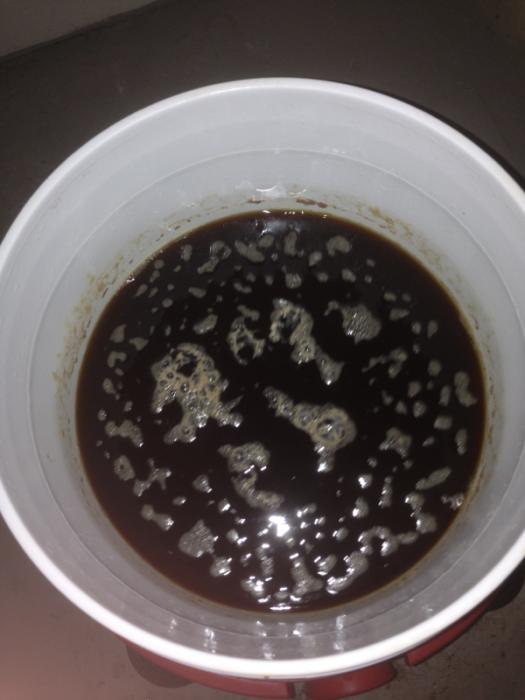henchman24
Well-Known Member
- Joined
- Jul 29, 2013
- Messages
- 158
- Reaction score
- 32
I brewed my first batch on the 22nd of July. It was just a simple ESB extract kit from Midwest. I did a full boil (or somewhat close to it as I ended up with a tad under 5 gallons) and a yeast starter. Before pitching the yeast the SG was at 1.050. The recipe calls for 1.042-1.046, I assume mine was higher because it was more condensed, does that sound right?
For my fermenting I have a fridge with a controller that has kept temps around 68 degrees in the fridge (the temp on the fermenter went to as high as ~72-74, I now know I have to lower the fridge temp more to keep it from getting so high). It took about 24 hours for the airlock to show any activity. After that it was quite vigorous (had to re-fill the airlock a couple times, it never went dry though) for ~2 days and then the bubbles pretty much stopped. I recalled reading in Palmer's book that fermenting could be done in as little as 48 hours, so I decided to check the gravity and it came out to 1.015. The krausen was there mostly a tan color and about an inch deep. The gravity seemed a bit high to me (recipe calls for 1.010-1.012), and after some reading on here I decided to leave it in the primary. Well after a day it took off again, this time staying around ~68 according to the fermenter. By yesterday (1 week of fermenting time) it had slowed to about 1 bubble every 30 seconds on the airlock, so I decided to check my gravity again. This time it read 1.012, which is in the range of the recipe, but the krausen looked better this time. It was a little bit deeper of a brown color, smelled like I think beer should, and was about 3/4" deep. The airlock hasn't bubbled since I opened it this last time, but I know that is an inaccurate way to look at fermentation. I'm going to take another reading today to see if gravity stays the same, and tomorrow day as well.
So herein lies my questions:
Should I leave the beer in the primary fermenter for another 5-7 days even if the gravity stabilizes?
Should I even worry about using the secondary and just keep it in the primary for 2-3 more weeks? (kegging if that makes a difference and for my first batch, not super worried about clarity... I just want good beer)
For my fermenting I have a fridge with a controller that has kept temps around 68 degrees in the fridge (the temp on the fermenter went to as high as ~72-74, I now know I have to lower the fridge temp more to keep it from getting so high). It took about 24 hours for the airlock to show any activity. After that it was quite vigorous (had to re-fill the airlock a couple times, it never went dry though) for ~2 days and then the bubbles pretty much stopped. I recalled reading in Palmer's book that fermenting could be done in as little as 48 hours, so I decided to check the gravity and it came out to 1.015. The krausen was there mostly a tan color and about an inch deep. The gravity seemed a bit high to me (recipe calls for 1.010-1.012), and after some reading on here I decided to leave it in the primary. Well after a day it took off again, this time staying around ~68 according to the fermenter. By yesterday (1 week of fermenting time) it had slowed to about 1 bubble every 30 seconds on the airlock, so I decided to check my gravity again. This time it read 1.012, which is in the range of the recipe, but the krausen looked better this time. It was a little bit deeper of a brown color, smelled like I think beer should, and was about 3/4" deep. The airlock hasn't bubbled since I opened it this last time, but I know that is an inaccurate way to look at fermentation. I'm going to take another reading today to see if gravity stays the same, and tomorrow day as well.
So herein lies my questions:
Should I leave the beer in the primary fermenter for another 5-7 days even if the gravity stabilizes?
Should I even worry about using the secondary and just keep it in the primary for 2-3 more weeks? (kegging if that makes a difference and for my first batch, not super worried about clarity... I just want good beer)




